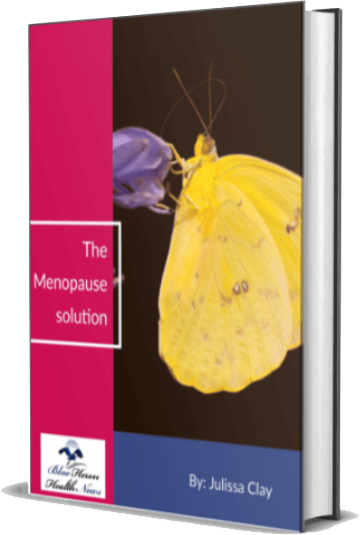
The Menopause Solution After going through the review of The Menopause Solution it can be concluded easily that you should try this program at least once if menopause is destroying your internal organs or deteriorating your physical health to a considerable level. This program can help in resolving your health issues caused by perimenopause and menopause in a completely natural manner. You can use this program without any risk as you can get your money back if you are not satisfied with its results.
How can yoga help with menopause symptoms?
Yoga can be highly beneficial for managing menopause symptoms, offering both physical and psychological relief. Here’s a detailed look at how yoga can help with various menopause symptoms:
1. Reducing Hot Flashes and Night Sweats
– Cooling Breath Techniques:
- Sheetali and Sitkari Pranayama: These breathing techniques have a cooling effect on the body, which can help reduce the intensity and frequency of hot flashes.
- Practice: Sit in a comfortable position, inhale through a rolled tongue (Sheetali) or through clenched teeth (Sitkari), and exhale through the nose. Repeat for several minutes.
– Restorative Poses:
- Reclined Bound Angle Pose (Supta Baddha Konasana): This pose can help calm the nervous system and reduce hot flashes.
- Practice: Lie on your back with the soles of your feet together and knees apart. Support your head and knees with pillows or blocks.
2. Improving Mood and Mental Health
– Meditation and Mindfulness:
- Benefits: Regular meditation practice can help reduce stress, anxiety, and depression by promoting relaxation and mental clarity.
- Practice: Incorporate mindfulness meditation or guided relaxation into your daily routine.
– Breath Awareness:
- Benefits: Focusing on the breath can help ground you in the present moment and reduce feelings of anxiety and stress.
- Practice: Practice diaphragmatic breathing or alternate nostril breathing (Nadi Shodhana) for calming effects.
– Balancing Poses:
- Tree Pose (Vrksasana): This pose can help improve focus and mental stability.
- Practice: Stand on one leg with the other foot resting on the inner thigh or calf, and bring your hands to prayer position.
3. Promoting Better Sleep
– Relaxation Techniques:
- Yoga Nidra: This guided relaxation practice promotes deep rest and can help improve sleep quality.
- Practice: Follow a Yoga Nidra guided meditation before bedtime to help transition into a restful state.
– Gentle Poses:
- Legs Up the Wall (Viparita Karani): This pose helps relax the nervous system and can be particularly soothing before bed.
- Practice: Lie on your back with your legs extended up against a wall. Relax in this position for 10-15 minutes.
4. Managing Weight and Improving Physical Fitness
– Strength-Building Poses:
- Warrior Poses (Virabhadrasana I, II, and III): These poses strengthen the legs, core, and arms, aiding in weight management and muscle tone.
- Practice: Incorporate these poses into your yoga routine to build strength and endurance.
– Dynamic Sequences:
- Sun Salutations (Surya Namaskar): This flowing sequence of poses improves cardiovascular fitness, flexibility, and strength.
- Practice: Perform several rounds of Sun Salutations daily to enhance overall physical fitness.
5. Supporting Bone Health
– Weight-Bearing Poses:
- Benefits: Weight-bearing yoga poses help maintain bone density and reduce the risk of osteoporosis.
- Practice: Include poses like Downward-Facing Dog (Adho Mukha Svanasana), Plank Pose, and Chair Pose (Utkatasana) in your practice.
6. Enhancing Flexibility and Joint Health
– Stretching Poses:
- Benefits: Regular yoga practice improves flexibility and joint mobility, which can be particularly beneficial as joints may become stiffer with age.
- Practice: Poses like Forward Bend (Uttanasana), Cat-Cow Pose (Marjaryasana-Bitilasana), and Pigeon Pose (Eka Pada Rajakapotasana) can help maintain flexibility.
7. Boosting Energy Levels
– Invigorating Poses:
- Benefits: Certain yoga poses can help increase energy levels and reduce fatigue.
- Practice: Include poses like Cobra Pose (Bhujangasana), Bridge Pose (Setu Bandhasana), and Upward-Facing Dog (Urdhva Mukha Svanasana) to boost energy.
8. Reducing Symptoms of Menopause-Related Conditions
– Heart Health:
- Benefits: Yoga can help manage blood pressure and improve cardiovascular health, reducing the risk of heart disease.
- Practice: Incorporate gentle and restorative yoga practices to support heart health.
– Digestive Health:
- Benefits: Yoga can improve digestion and reduce symptoms like bloating and constipation.
- Practice: Poses like Wind-Relieving Pose (Pawanmuktasana) and Twist Poses (Ardha Matsyendrasana) can aid digestion.
Conclusion
Yoga offers a holistic approach to managing menopause symptoms by addressing physical, mental, and emotional well-being. Regular practice of yoga can reduce hot flashes, improve mood and sleep, manage weight, support bone health, enhance flexibility, boost energy levels, and promote overall health. Incorporating a variety of yoga poses, breath techniques, and mindfulness practices can provide significant relief from menopausal symptoms and improve quality of life. As with any new exercise routine, it’s important to consult with a healthcare provider or a certified yoga instructor to ensure the practices are safe and appropriate for your individual needs.

The Menopause Solution™ So if you do not want to be ill-treated by the symptoms of your menopause then you must try it once. It will surely work for you. its price has been reduced only for a limited period. So you should place your order on the official website to avail of this benefit and make your life happier again.